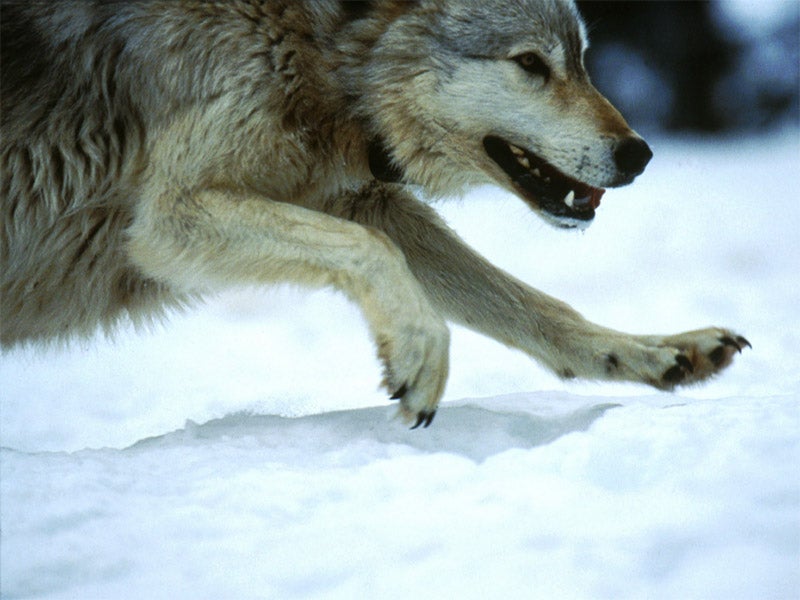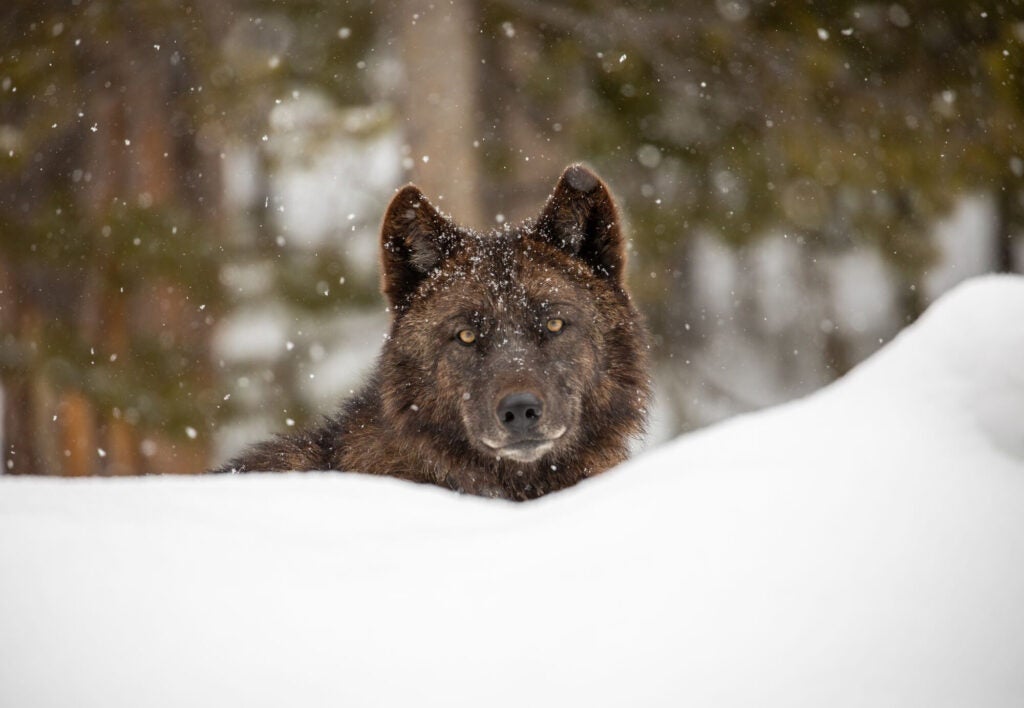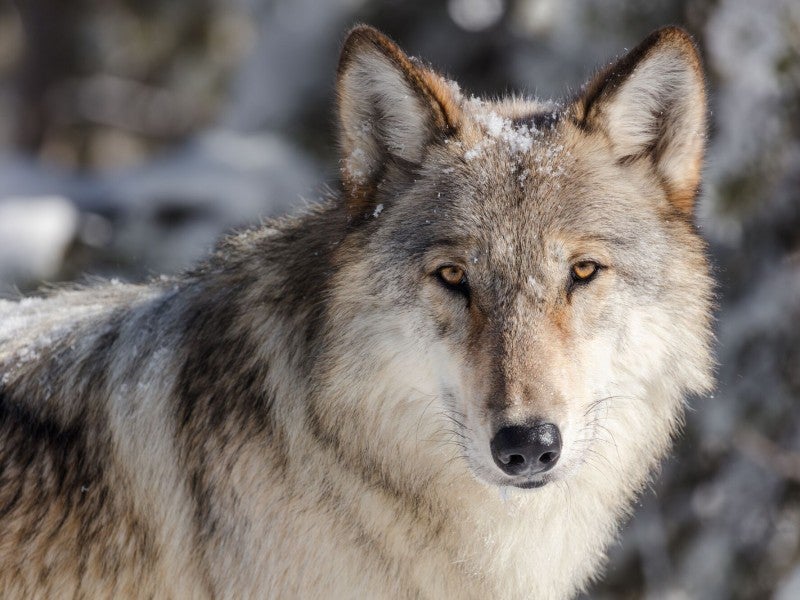Defending Gray Wolves
Wolves are a keystone species, serving a crucial role in how their native ecosystems function. The extermination of wolves in regions such as the Greater Yellowstone ecosystem triggered a cascade of effects that dramatically altered the landscape.
Case Overview
One of North America’s most iconic native predators, the gray wolf used to be found throughout the United States — but centuries of trapping, hunting, and poisoning, decimated the wolf population. By the 1980s, only a few small pockets of survivors remained in the continental United States.
The U.S. Fish and Wildlife Service protected gray wolves under the Endangered Species Act in 1978, and efforts to reintroduce the gray wolf to the Northern Rockies in 1995 ultimately succeeded. By 2005, the population had finally climbed above 1,000 animals. Despite this encouraging recovery, there have been and continue to be state management policies pushing for aggressive population reductions in Montana, Idaho and Wyoming.
For the past two decades, Earthjustice has been instrumental in court in protecting the gray wolves.
Most recently, on behalf of our clients, Earthjustice challenged a rule issued by the Trump administration that removed Endangered Species Act protections for gray wolves in the lower-48 states except for a small population of Mexican gray wolves in Arizona and New Mexico. The administration made the decision despite the science that concludes wolves are still functionally extinct in the vast majority of their former range across the continental U.S.

Case Updates
Case page created on January 14, 2021.

